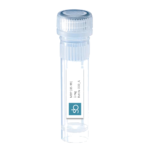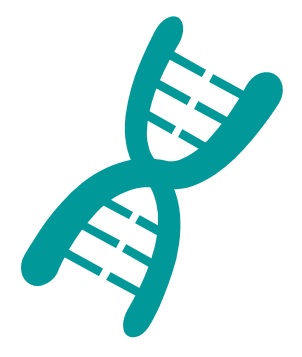MBP (85–99) – EKPKVEAYKAAAAPA – CAS : 444305-16-2
MBP (Myelin Basic Protein)
MBP (Myelin basic protein – UniProtKB – P04370) is a protein of around 18 ,5 kDA. MBP is a major constituent of the myelin sheath of oligodendrocytes and Schwann cells in the nervous system. Myelin basic protein is believed to be important in the process of myelination of nerves in the nervous system. Antibodies against Myelin Basic Protein have shown a role in the pathogenesis of MS (Multiple Sclerosis) like in experimental autoimmune encephalomyelitis.
MBP 85-99 induces EAE
MBP (85-99) peptide is a fragment of MBP protein used in research to induce EAE (experimental autoimmune encephalomyelitis) due to the binding with the leukocyte human (HLA)-DR2. MBP (myelin basic protein) 85-99 is used to stimulate immune response and CD4+ T cell activity.

Technical specification
 |
Sequence : EKPKVEAYKAAAAPA – Purity : > 95% |
 |
MW : 1543.76 g / mol (C70H114N18O21) |
 |
For research use |
 |
Counter-Ion : TFA Salts (see option TFA removal) |
 |
Delivery format : Freeze dried in polypropylene 2mL microtubes |
 |
Other names : Myelin Basic Protein (85-99),CAS 444305-16-2 |
 |
Peptide Solubility Guideline |
 |
Bulk peptide quantities available |
Price
| Product catalog | Size | Price € HT | Price $ USD |
| SB137-1MG | 1 mg | 110 | 138 |
| SB137-5MG | 5 mg | 385 | 481 |
References
Proc Natl Acad Sci USA. 2004 Aug 10;101(32):11749-54. doi: 10.1073/pnas.0403833101
Modified amino acid copolymers suppress myelin basic protein 85–99-induced encephalomyelitis in humanized mice through different effects on T cells
A humanized mouse bearing the HLA-DR2 (DRA/DRB1*1501) protein associated with multiple sclerosis (MS) and the myelin basic protein (MBP) 85–99-specific HLA-DR2-restricted T cell receptor from an MS patient has been used to examine the effectiveness of modified amino acid copolymers poly(F ,Y ,A ,K)n and poly-(V ,W ,A ,K)n in therapy of MBP 85–99-induced experimental autoimmune encephalomyelitis (EAE) in comparison to Copolymer 1 [Copaxone,poly(Y ,E ,A ,K)n]. The copolymers were designed to optimize binding to HLA-DR2. Vaccination,prevention,and treatment of MBP-induced EAE in the humanized mice with copolymers FYAK and VWAK ameliorated EAE more effectively than Copolymer 1,reduced the number of pathological lesions,and prevented the up-regulation of human HLA-DR on CNS microglia. Moreover,VWAK inhibited MBP 85–99-specific T cell proliferation more efficiently than either FYAK or Copolymer 1 and induced anergy of HLA-DR2-restricted transgenic T cells as its principle mechanism. In contrast,FYAK induced proliferation and a pronounced production of the antiinflammatory T helper 2 cytokines IL-4 and IL-10 from nontransgenic T cells as its principle mechanism of immunosuppression. Thus,copolymers generated by using different amino acids inhibited disease using different mechanisms to regulate T cell responses.
J Exp Med . 2000 Apr 17;191(8):1395-412. doi: 10.1084/jem.191.8.1395
Visualization of Myelin Basic Protein (Mbp) T Cell Epitopes in Multiple Sclerosis Lesions Using a Monoclonal Antibody Specific for the Human Histocompatibility Leukocyte Antigen (Hla)-Dr2–Mbp 85–99 Complex
Susceptibility to multiple sclerosis (MS) is associated with the human histocompatibility leukocyte antigen (HLA)-DR2 haplotype,suggesting that major histocompatibility complex class II–restricted presentation of central nervous system–derived antigens is important in the disease process. Antibodies specific for defined HLA-DR2–peptide complexes may therefore be valuable tools for studying antigen presentation in MS. We have used phage display technology to select HLA-DR2–peptide-specific antibodies from HLA-DR2–transgenic mice immunized with HLA-DR2 molecules complexed with an immunodominant myelin basic protein (MBP) peptide (residues 85–99). Detailed characterization of one clone (MK16) demonstrated that both DR2 and the MBP peptide were required for recognition. Furthermore,MK16 labeled intra- and extracellular HLA-DR2–MBP peptide complexes when antigen-presenting cells (APCs) were pulsed with recombinant MBP. In addition,MK16 inhibited interleukin 2 secretion by two transfectants that expressed human MBP–specific T cell receptors. Analysis of the structural requirement for MK16 binding demonstrated that the two major HLA-DR2 anchor residues of MBP 85–99 and the COOH-terminal part of the peptide,in particular residues Val-96,Pro-98,and Arg-99,were important for binding. Based on these results,the antibody was used to determine if the HLA-DR2–MBP peptide complex is presented in MS lesions. The antibody stained APCs in MS lesions,in particular microglia/macrophages but also in some cases hypertrophic astrocytes. Staining of APCs was only observed in MS cases with the HLA-DR2 haplotype but not in cases that carried other haplotypes. These results demonstrate that HLA-DR2 molecules in MS lesions present a myelin-derived self-peptide and suggest that microglia/macrophages rather than astrocytes are the predominant APCs in these lesions.
